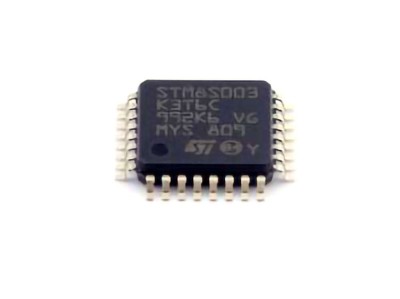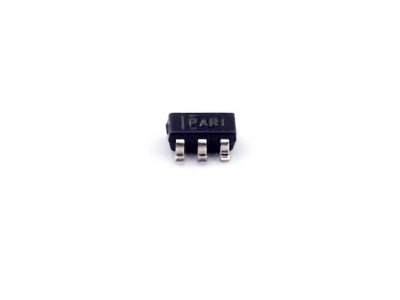
Understanding the LD1117S33CTR Voltage Regulator and Common Issues
The LD1117S33CTR is a low-dropout (LDO) voltage regulator, which means it is designed to provide stable output voltage even when the input voltage is close to the desired output voltage. This makes the LD1117S33CTR ideal for applications where space is limited, and power efficiency is a priority. It is widely used in devices such as microcontrollers, communication systems, and low-power devices requiring a stable 3.3V supply.
Despite its popularity and ease of use, users may encounter various issues with this component. Understanding the root causes of these problems is crucial to resolving them effectively. In this section, we will explore some of the most common problems and their potential solutions.
1. Excessive Heat Generation
One of the most common issues users face when working with the LD1117S33CTR is excessive heat generation. An LDO regulator such as the LD1117S33CTR works by dissipating the difference between the input voltage and the output voltage as heat. If the difference between the input and output voltages is large, the component will generate more heat.
Causes:
High input voltage relative to the output voltage.
High current draw from the load.
Solutions:
Lower the Input Voltage: If possible, reduce the input voltage closer to the output voltage (3.3V) to minimize the heat dissipation.
Improve Heat Dissipation: Add a heat sink to the LD1117S33CTR or improve ventilation around the component. Using larger or more efficient Capacitors on both the input and output side can help distribute the heat more evenly.
Use a Switching Regulator: If heat continues to be an issue, consider switching to a switching regulator (buck converter) instead of an LDO, as switching regulators are far more efficient at converting excess voltage.
2. Unstable Output Voltage
Another common problem is when the LD1117S33CTR fails to provide a stable 3.3V output. This can cause system instability, especially in sensitive electronics like microcontrollers or communication devices.
Causes:
Insufficient decoupling capacitor s.
Incorrect capacitor values.
A noisy or fluctuating input voltage.
Solutions:
Add or Replace Decoupling Capacitors: The LD1117S33CTR typically requires a minimum of 10µF capacitors on both the input and output. Ensure that the capacitors are of good quality, low ESR (equivalent series resistance), and placed as close to the regulator as possible. Higher capacitance may be necessary for more stable operation.
Check the Input Voltage: Ensure that the input voltage is within the specified range for the LD1117S33CTR, typically 4.0V to 15V. If the input voltage fluctuates, consider using a more stable power supply or adding an additional filtering stage before the regulator.
3. Output Voltage Lower Than Expected
If the output voltage is lower than the expected 3.3V, the issue may stem from several potential causes, including incorrect connections, component failure, or excessive load conditions.
Causes:
Overloading the regulator with a current draw exceeding its limits.
Faulty or low-quality capacitors.
Incorrect resistor or component configuration in the voltage regulation circuit.
Solutions:
Reduce the Load Current: Ensure the current drawn by the load does not exceed the maximum output current of the LD1117S33CTR, which is typically 800mA (with proper heat dissipation). If necessary, distribute the load across multiple regulators.
Check Capacitor Integrity: Ensure that the input and output capacitors are rated correctly. Faulty capacitors can cause low output voltages or unstable operation. Capacitors with low ESR and high quality are essential for stable performance.
Verify Circuit Connections: Double-check the design of the circuit to ensure all components are connected correctly. A miswired component can cause improper voltage regulation.
4. Regulator Output Voltage Drift
Voltage drift is a phenomenon where the output voltage gradually changes over time, even when the input voltage and load current remain stable. This can affect the performance of devices that require precise voltage levels, such as sensors or communication circuits.
Causes:
Temperature variations.
Aging components.
Insufficient capacitor size or poor quality.
Solutions:
Use Stable Capacitors: Choosing the right capacitors is critical to preventing voltage drift. Low ESR ceramic capacitors (10µF or higher) help stabilize the output voltage and improve transient response.
Consider Temperature Compensation: If temperature fluctuations are causing voltage drift, consider adding a temperature compensation circuit or using a regulator with better temperature stability.
5. No Output Voltage (Dead Regulator)
One of the most frustrating issues is when the LD1117S33CTR appears to be completely dead, with no output voltage at all. This can occur due to various reasons, including component failure or incorrect input voltages.
Causes:
Input voltage below the dropout voltage.
Component failure (e.g., short circuit or internal damage).
Incorrect circuit design or faulty connections.
Solutions:
Check the Input Voltage: The LD1117S33CTR requires a minimum input voltage that is higher than the output by at least 1.1V (the typical dropout voltage). If the input voltage is too low, the regulator will not be able to output the desired 3.3V.
Check for Damage: Inspect the regulator for signs of physical damage. If there are burnt areas, cracks, or obvious signs of failure, it may be necessary to replace the component.
Verify Circuit Design: Ensure that the circuit is designed correctly according to the manufacturer's recommendations. If the regulator is part of a more complex power supply circuit, check all connections and components for faults.
Advanced Troubleshooting and Proactive Solutions for the LD1117S33CTR
While the common issues listed in Part 1 cover many of the problems that users might face when using the LD1117S33CTR, there are also advanced troubleshooting steps and strategies that can help you optimize the performance of this voltage regulator. Additionally, it is important to understand the role of each component in the regulator’s operation, as well as the broader context of the power supply design.
6. Ripple and Noise Issues
One of the key benefits of LDO regulators like the LD1117S33CTR is their ability to provide clean, noise-free output. However, in certain applications, noise or ripple may still be present in the output, which can cause interference with sensitive devices.
Causes:
High-frequency noise from the input voltage.
Inadequate filtering at the input or output.
Poor PCB layout or grounding.
Solutions:
Improve Filtering: Use high-quality capacitors on both the input and output sides to filter out noise. Consider adding additional decoupling capacitors at different locations near sensitive components.
Use Ground Planes: For improved noise suppression, ensure that your PCB has a solid ground plane to minimize voltage fluctuations and reduce noise coupling between components.
Add External filters : If necessary, use external LC filters or ferrite beads to suppress high-frequency noise from entering the regulator or from the regulator’s output.
7. Overcurrent and Short Circuit Protection
The LD1117S33CTR is designed to provide overcurrent and thermal protection, but it is essential to ensure that the design does not trigger these protections under normal operating conditions. An overcurrent event or thermal shutdown could lead to the regulator shutting down and failing to provide the expected output voltage.
Causes:
Excessive load current.
Inadequate heat dissipation.
Faulty circuit design causing excessive current draw.
Solutions:
Proper Heat Management : Ensure that the regulator has adequate heat sinking and ventilation. If your design involves a high current load, consider using a larger heat sink or improving airflow around the regulator.
Current Limiting: Use current-limiting resistors or fuses to protect the regulator from excessive current draw. In designs where overcurrent conditions are expected, consider using a more robust power supply or regulator with higher current capabilities.
8. PCB Layout and Design Considerations
A well-designed PCB layout can prevent many common issues associated with LDO regulators. Poor PCB layout can lead to problems like instability, excessive noise, and inefficient heat dissipation.
Best Practices:
Minimize Trace Lengths: Keep the traces between the regulator and the input/output capacitors as short as possible to reduce parasitic inductance and resistance.
Place Capacitors Close to the Regulator: The input and output capacitors should be placed as close to the regulator as possible to minimize noise and ensure stability.
Use Multiple Ground Layers: Ensure a solid ground plane for the regulator and related components to reduce the impact of noise and voltage fluctuations.
9. Selecting the Right Capacitors
Choosing the right capacitors is crucial for the stable operation of the LD1117S33CTR. Capacitors with high ESR or incorrect values can lead to unstable operation, while low-quality capacitors may degrade over time.
Recommendations:
Use low-ESR ceramic capacitors for both input and output filtering.
A typical setup includes a 10µF ceramic capacitor on the input and a 10µF or higher ceramic capacitor on the output.
Ensure that the capacitors meet or exceed the voltage ratings specified in the datasheet.
10. Regular Maintenance and Monitoring
Even though the LD1117S33CTR is a reliable and low-maintenance component, regular monitoring can help identify potential issues before they become critical. This includes checking the regulator’s temperature, voltage stability, and current draw during regular operation.
Solutions:
Temperature Monitoring: Install temperature sensors near the regulator to ensure it is operating within its safe thermal limits.
Check for Voltage Drops: Use an oscilloscope or voltmeter to monitor the output voltage over time to detect any fluctuations or drift that could indicate issues with the regulator.
Conclusion
The LD1117S33CTR is a versatile and widely used LDO voltage regulator, but like all electronic components, it may encounter issues during operation. By understanding the common causes of problems such as excessive heat, unstable voltage, or poor filtering, users can implement effective solutions to maintain a stable power supply. Through careful design considerations, the right components, and proactive troubleshooting, the LD1117S33CTR can continue to provide reliable and efficient voltage regulation for a wide range of applications.
Partnering with an electronic components supplier sets your team up for success, ensuring the design, production, and procurement processes are quality and error-free.


